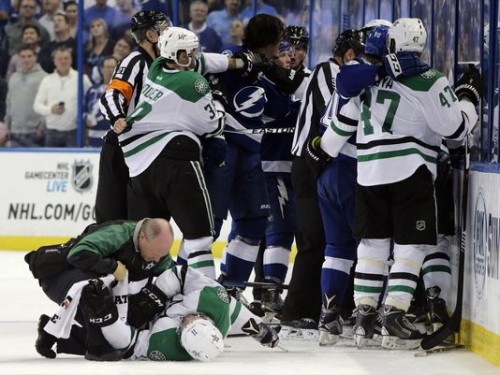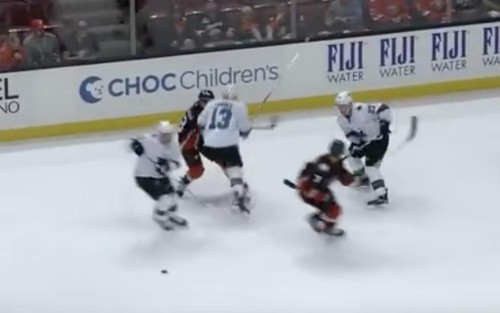NHL’s Discipline System Has Serious Flaws

Racing across the ice at breakneck speed, Raffi Torres was a man on a mission. The replay left no doubt as to his intentions: barreling through Jakob Silfverberg, avoiding all other players in his path en route to catching the Anaheim Ducks forward’s head flush with his shoulder. As Torres disputed the ensuing penalty, a visibly uncomfortable Silfverberg lay on the ice in pain.
And with that the NHL’s Department of Player Safety handed down its first suspension of the season, slapping Torres with a 41-game ban (one of the longest in NHL history). But for as much as the league needed to throw the book at Torres – previous suspensions clearly weren’t enough to send the message that he needed to smarten up – such actions are a rarity in today’s NHL.

Whether it’s the threat of an inevitable appeal from the NHLPA, the hopeless optimistic thinking that players will have their own revelation independent of league action, or simply incompetence on the part of chief disciplinarian Stéphane Quintal and his predecessors, the league boasts a less-than-impressive track record when it comes to disciplining its players.
Of all the problems that exist with the NHL’s disciplinary system – and there are many – the common thread through them all is a lack of consistency. Despite the fact there are numerous checks to the head, vicious slashes and other illegal plays that occur numerous times over the course of a season, it’s rare to see two players receive the same punishment for the same action.
That makes it especially tough to use past plays when attempting to gauge potential discipline. Last season, for instance, Jannik Hansen, Keith Aulie and Jared Cowen were disciplined for checks to the head within a two month span, yet there were three different outcomes: a fine, two-game suspension and three-game suspension respectively.
If three different players receive three different punishments for the same action, how can the system be taken seriously? Of course, there’s no benchmark for suspensions since repeat- and first-time offenders are treated differently, but much of the blame for the variation in punishment can be pinned on the fact the league weighs injuries as part of the suspension process.
The use of injuries in determining the magnitude of a suspension is, in a word, misguided. Each player has his own pain threshold, so something that forces one player to leave a game entirely may cause another player to miss only a shift or two. The act itself – in addition to the player’s record – should be the only measures used by Quintal and co. when dishing out discipline.
Instead, some fans and armchair GMs have gone a step further and suggested the league make suspensions equal to the time missed due to injury by the players affected by the incidents in question. But this strategy once again leads to the aforementioned problem of putting too much stock in a player’s recovery time, which can be influenced by multiple factors.
Often times, even when injuries are factored into the equation, suspensions still don’t accurately reflect the severity of the action. Last season (according to the Department of Player Safety’s website) over 900 incidents were reviewed by the league, but only 44 made it to the hearing stage – a number that is staggeringly low.
Although the league states that an injury doesn’t need to occur – nor does the offender need to have a record – in order for a suspension to be administered, history says otherwise. If the NHL was truly serious about cutting down on illegal plays, it wouldn’t put nearly as much emphasis on the aforementioned factors in the decision making process and instead look at the play itself.
Was there clear intent? Could the play have been avoided? Did the player go out of his way to commit the offence? If yes, then suspend the player accordingly. And if the same player continues to commit the same infraction? Make the suspension increasingly harsher working up to a lifetime ban – if, say, a player continues to target players’ heads à la Torres.
If that seems extreme it’s because it is – and it needs to be. The NHL continues to fail itself and its players by conveniently and continually letting players off the hook when it comes to discipline. The league continues to give players such as Torres and Matt Cooke seventh and eighth chances, and it’s only a matter of time before they abuse the faith instilled in them.
(Editor’s note: since suspending Torres, the league has disciplined three more players: Nikita Nesterov, suspended two games for boarding; Tyson Barrie, suspended three games for charging and interference; and Jordin Tootoo, fined for a dangerous trip.)

